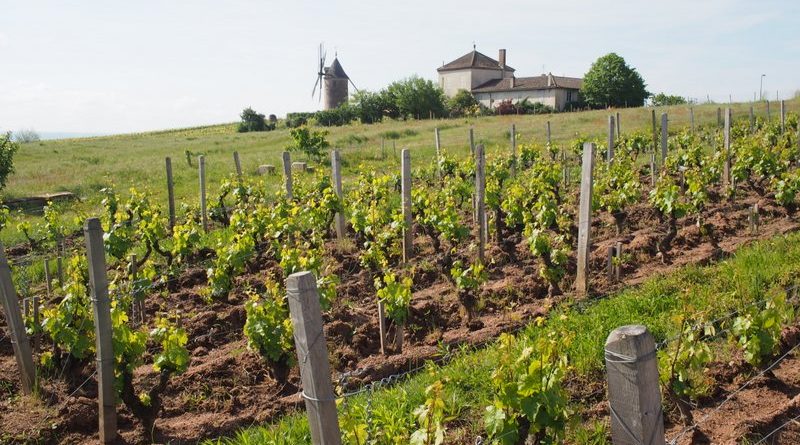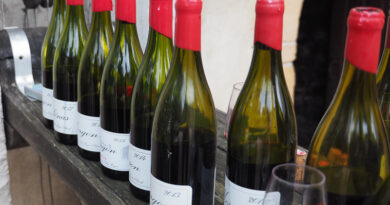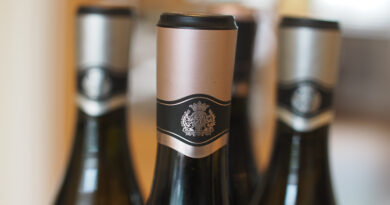Château du Moulin-à-Vent: a new Beaujolais star
Moulin-à-Vent is one of the most prestigious of the crus of Beaujolais, and has a reputation for making ageworthy wines. And there’s a new star on the scene, the revitalized Château du Moulin-à-Vent, which has been doing impressive work in the vineyards and cellars since being purchased by the Parinet family.
The famous windmill of Moulin-à-Vent sits at the heart of this 620 hectare Cru in Beaujolais, in the village of Romanèche Thorins. And just below it is the impressive Château du Moulin-à-Vent, which has been renovated extensively since it was acquired by Jean-Jacques Parinet in 2009. Parinet originally came from Beaujolais but then made his money in the IT business, and for the last few years he’s been assisted by Brice Laffond, who oversees both the winery and the 30 hectares of vines the domaine owns. His son Edouard also works with the domaine, and both act as co-proprietors.
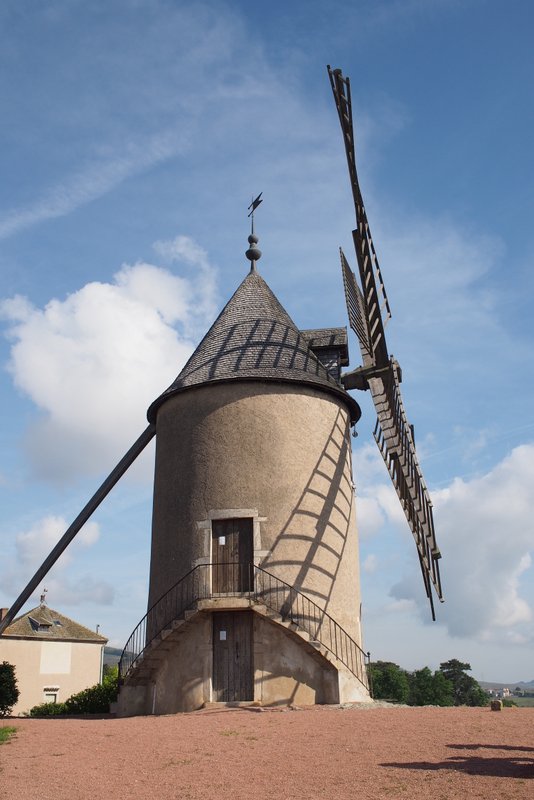
In Moulin-à-Vent, the most interesting terroirs aren’t at the top or the bottom of the cru, but in a strip running east to west, and the Château is in the middle of this strip, looking across to the border of the appellation (some trees mark this), and over to Fleurie.
The Château has 130 parcels of vines, and gradually they are being trellised, although it’s not possible to use cane pruning in the crus – the vines must be head trained. One of the motivations for the trellising is to make it easier to work the soils. Romanèche Thorins, the local town, used to be the site of a manganese mine, and the soils here have a high concentration metallic oxides.
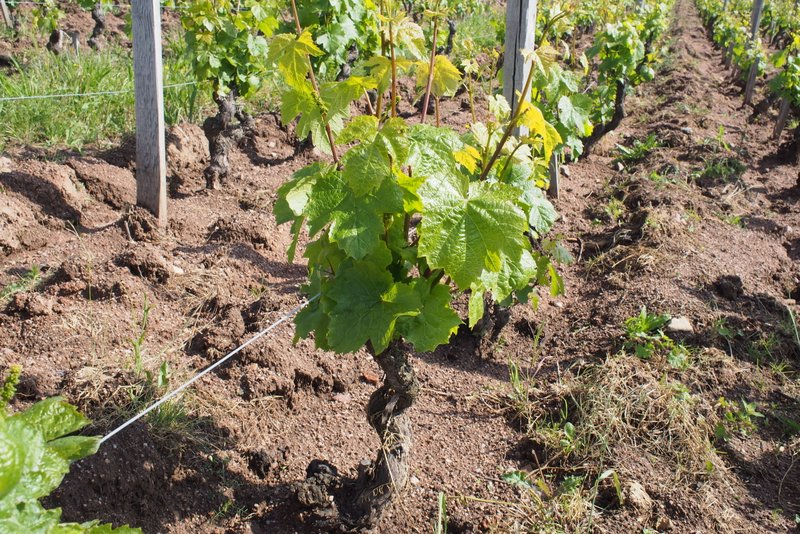
They work the soil in all the vineyards rather than use herbicide. The plantings are high density, so they have over-row tractors. They will start doing this after pruning has finished and the vines are starting to bud. Then it depends on the weather as to how many more times they need to do it. ‘Under dry conditions, if it carries on until the summer, we’ll probably have to go two or three times,’ says Edouard Parinet. ‘If we have a humid spring, we’ll maybe need to do it six or seven times, so the amount of work can be tripled. Here in Moulin-à-Vent the soils are quite sandy so they are easy to work. We don’t break so many tools, but the weeds can grow very fast with some rain.’

One of the advantages of Moulin is that has been a prestigious cru and so winegrowers have been able to afford taking a bit more time doing things in the vineyard. ‘The treatment in Moulin has been historically better than the rest of the crus,’ says Edouard. ‘About half of the vineyard surface is treated in a good way and half very badly and roughly, but the situation for the last 10 years has consistently gone in the right direction. People have been working the soils, and vineyards have been replanted, which means that people want to invest for the future.’
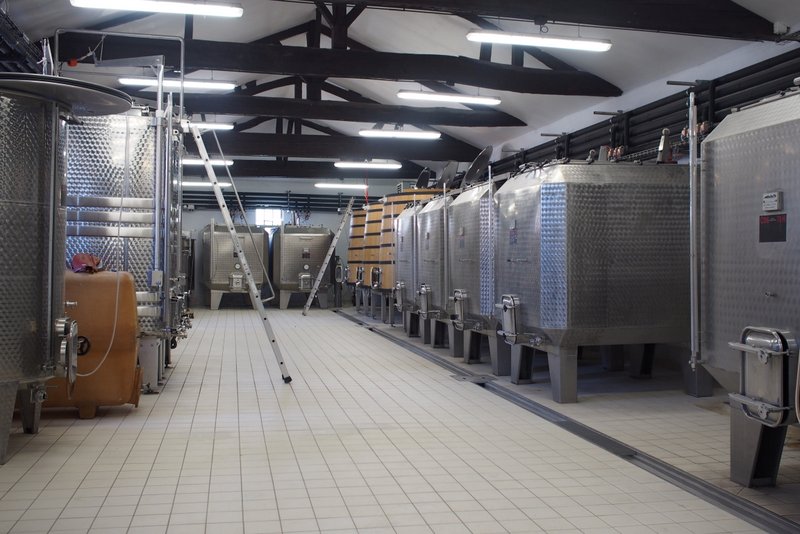
Edouard lists mildew as the main disease pressure. But their biggest challenge has been improving the miserly yields from their vineyards. ‘We are in the range of 25-30 hl/ha. For 2018 we made our best yield with 33 hl/ha,’ he says. ‘I think the viticulture is creating a better environment and we are getting better results.’
One big issue in the region is the risk of hail and frost. ‘In 2017 and 2019 we lost the equivalent of a complete vintage,’ says Edouard. ‘In 2019 half the crop was lost to frost, and they experienced the same in their vineyard in Pouilly-Fuissé. In 2017 the problem was hail and frost: 70% of the crop was lost.’
In the winery, winemaking is in what’s referred to widely as the ‘Burgundian’ style. The Beaujolais style involves whole bunches and carbonic or semi-carbonic maceration, whereas the Burgundian style may have some whole bunch, but the ferment is punched down and pumped over, and then elevage is in small barrels. At the Château, the degree of destemming depends on the grapes and the vintage, but typically just 30% whole bunch is used. The maturity of the stems is a deciding factor.
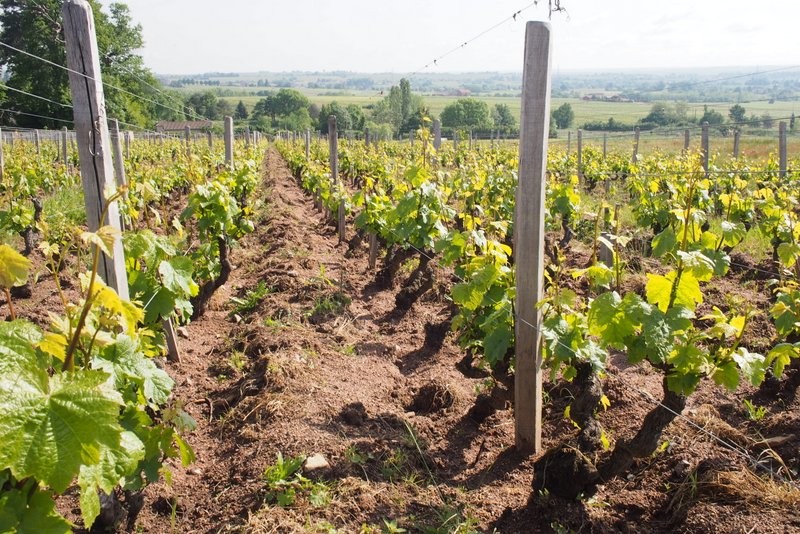
When they pick, the grapes from the younger vines are destemmed. The tanks are filled with the whole bunch first, then the destemmed fruit on top. Each plot is fermented separately, and they allow fermentation to start naturally, protected by carbon dioxide. Maceration is quite long at 21 days. ‘We don’t have a religion,’ says Laffond, referring to intervention. ‘If we have a tank with a problem we inoculate or use a pied de cuve.’ There is a lot of extraction at low temperature at the beginning, with punching the cap down. Then towards the end of fermentation it’s just pump overs. Normally, ferments are wild and sulfite levels are low (around 50 mg/ml total; this is just added at bottling).
Jean-Jacques Parinet says that his first surprise was to find that there was a real identity in the wines corresponding to specific areas in the appellation, and overall he thinks it’s important for the region to focus on the specificities of the crus. His approach is one of aiming for high quality. These are ambitious wines, quite polished, but they’re also really good.
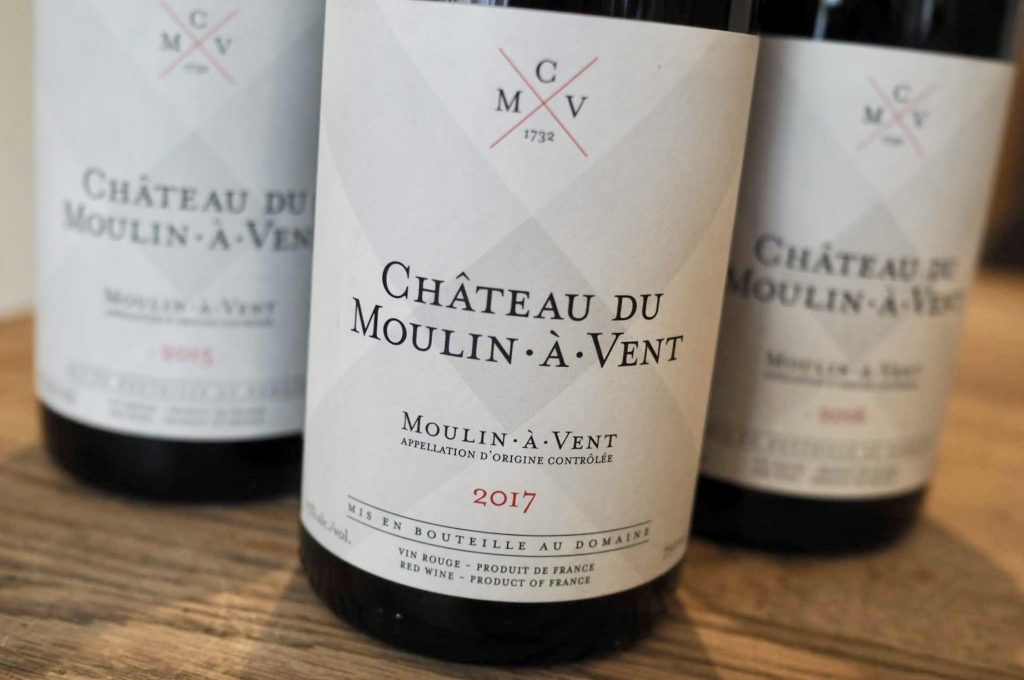
THE WINES
Château du Moulin-à-Vent 2017 Moulin-à-Vent, Beaujolais, France
13% alcohol. This is from a hail-affected vintage, and all the wine was aged in used barrels because of the reduced quantity. This has a brightness and delicacy, as well as some structure with lovely raspberry and cherry notes, as well as some fine spices. A very pretty, expressive wine with a bit of grip, and probably good for a decade in the cellar – more a short/medium term ager than a long. Very impressive, showing off the focus of 2017. 92/100 (04/20)
Château du Moulin-à-Vent 2016 Moulin-à-Vent, Beaujolais, France
13% alcohol. A couple of punchdowns here as well as the usual pumping over, and aged in 75% stainless steel and 25% used barrels. This is a really nicely balanced wine, with some red fruit brightness as well as some darker black cherry notes, as well as a grainy, grippy structure. This is mouthfilling and quite dense with some volume and fine herby hints. Brooding and ageworthy, but no problem tackling it now. 93/100 (04/20)
Château du Moulin-à-Vent 2015 Moulin-à-Vent, Beaujolais, France
13.5% alcohol. Picked early in this very warm year (beginning 27 August), while the acidity was still good. This has the density of 2015, but not the over-ripeness that some of the wines show. It’s firmly structured and quite taut, with grippy tannins complementing the ripe berry and black fruits. Grunty but with lovely fruit, this is a wine that may well age spectacularly. I’d certainly hold onto it for a while before broaching. 93/100 (04/20)
Château du Moulin-à-Vent Les Vérillats Moulin-à-Vent 2016 Beaujolais, France
13% alcohol. This is from a 4.4 hectare plot with shallow (25-50 cm) soils composed of granitic sand, over granite bedrock. The vines are 45 years old. This is pure, bright and vivid with lovely sweet, focused berry and cherry fruit. There’s some depth here, with notes of iron and minerals, as well as fresh acidity. There’s a brightness here: there’s some structure, but not too much, and the wine has elegance and transparency, as well as a bit of meaty savouriness. Lovely stuff, with class and precision. 94/100 (12/19)
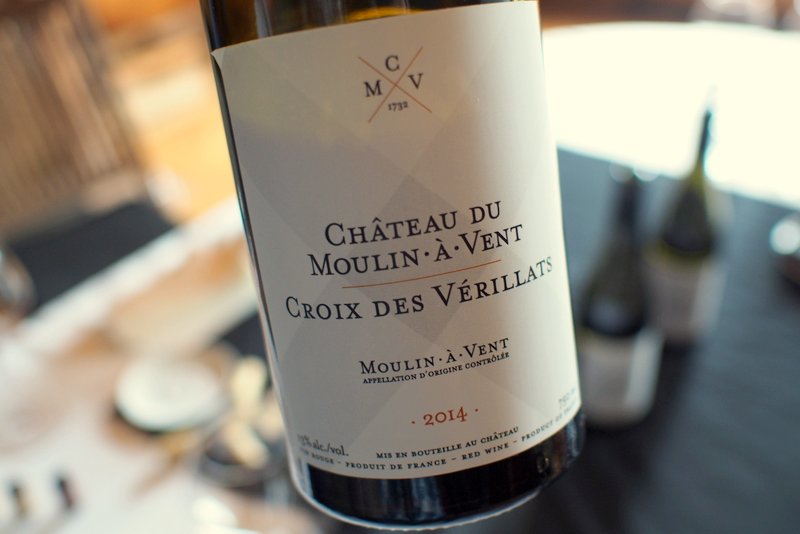
Château du Moulin-à-Vent Couvent a Thorins 2014 Beaujolais, France
Carbonic maceration and no oak. Vivid and grippy with sweet, primary black cherry and blackberry fruit. Vivid with notes of violet and iron. Lovely fruit. 91/100 (05/16)
Château du Moulin-à-Vent 2014 Beaujolais, France
Powerful, juicy and intense with some mineral notes. Refined and structural with nice purity and notes of iron and black cherry. Pure and direct. 93/100 (05/16)
Château du Moulin-à-Vent Croix des Verillats 2014 Beaujolais, France
Beautifully perfumed, aromatic and sweet with floral black cherry and raspberry notes, as well as some dried herbs. Beguiling and complex with good concentration. Pure and expressive with fine spices. Stylish and sophisticated. Polished but not overly so: thrilling in a modern style. 95/100 (05/16)
Château du Moulin-à-Vent Champ de Cour 2014 Beaujolais, France
Assertive fine and floral with slight spicy raspberry fruit on the nose. Slightly gravelly with fine spices. Fresh and lively with tarry raspberry fruit. Polished, with a bit of grip. 93/100 (05/16)
Château du Moulin-à-Vent La Rochelle 2014 Beaujolais, France
Concentrated, structured and quite powerful with dense, quite grippy red cherry fruit. Primary and grippy with nice focus. Still very tight. 93/100 (05/16)
Château du Moulin-à-Vent Champ de Cour 2011 Beaujolais, France
Sweet appealing cherry fruit nose with fine spices, subtle leather and herb notes, and a little development. Mellow, mineral black fruits on the palate. Very attractive. 91/100 (05/16)
Château du Moulin-à-Vent 2005 Beaujolais, France
Earth, spice, fudge with some tar on the nose. Shows evolution. Has nice weight with sweet spices and a bit of earthiness. On its way out. 85/100 (05/16)
Château du Moulin-à-Vent 1991 Beaujolais, France
Cloudy with soy, earth and spice on the nose. Faded colour with bricking. But it’s juicy, supple and elegant with some earth and spices, and a bit of citrus. Quite elegant in its maturity with nice fresness alongside the first stages of decay. 90/100 (05/16)
Château du Moulin-à-Vent 1976 Beaujolais, France
Sappy, floral, elegant edge to the berry fruits nose. Perfumed, with cherries and plums. Has tar and fudge. Elegant style with maturity but also freshness. Supple, bright and very interesting. Has evolved beautifully. 93/100 (05/16)
Find these wines with wine-searcher.com
UK agent: Liberty Wines

